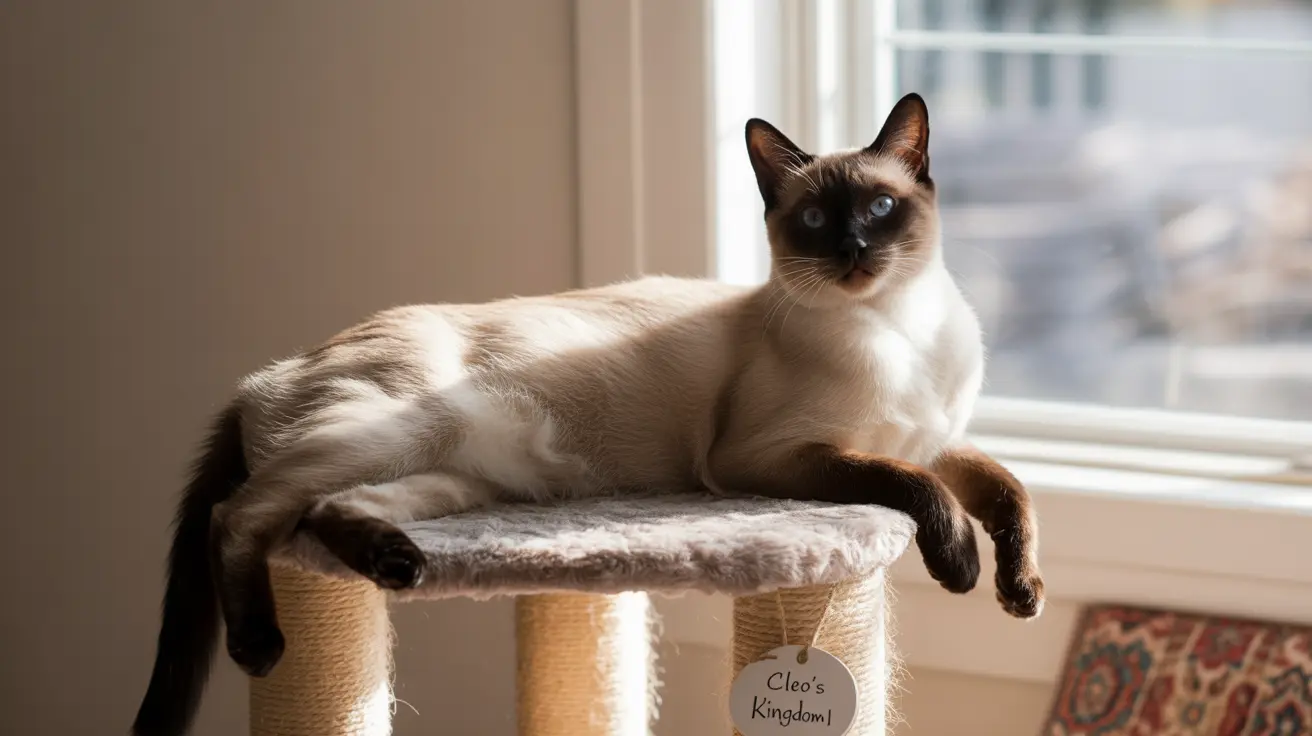Understanding the Seal Point Pattern
The seal point pattern is characterized by a light-colored body contrasting with darker extremities, known as "points." These points appear on the face, ears, paws, and tail, showcasing a deep brown, almost black coloration. What makes this pattern particularly fascinating is its temperature-sensitive nature – the cooler parts of the cat's body develop darker coloring, while warmer areas remain lighter.
Interestingly, seal point kittens are born almost completely white. Their distinctive markings develop gradually over the first few weeks of life, with full coloration sometimes taking up to a year to complete. This color development process is one of the most captivating aspects of seal point cats.
Breeds Featuring the Seal Point Pattern
While most commonly associated with Siamese cats, the seal point pattern appears in several prestigious cat breeds:
- Ragdoll
- Himalayan
- Birman
- Balinese
- Tonkinese
Each breed brings its own unique characteristics to the seal point pattern, though all share the striking contrast between body and points that makes these cats so distinctive.
Personality and Temperament
Seal point cats, particularly those of Siamese heritage, are known for their vibrant personalities. These cats typically display several characteristic traits:
- High intelligence and curiosity
- Strong vocal tendencies with distinctive meows
- Deep attachment to their human family members
- Active and playful nature
- Social behavior requiring significant interaction
These cats thrive on attention and engagement, making them ideal companions for families who can dedicate time to regular interaction and play.
Care and Maintenance
Caring for a seal point cat requires attention to several key areas:
Grooming Needs
Their short, sleek coats are relatively low-maintenance, requiring weekly brushing to remove loose hair and maintain coat health. Regular nail trimming and dental care are also essential parts of their grooming routine.
Environmental Requirements
These cats need enriching environments with plenty of opportunities for play and exercise. Cat trees, scratching posts, and interactive toys are crucial for their physical and mental well-being.
Health Considerations
While generally healthy, seal point cats may be prone to certain genetic conditions. Regular veterinary check-ups are essential to monitor their health and catch any potential issues early.
Frequently Asked Questions
What causes the distinct seal point coloration in seal point cats and how does it develop over time?
The seal point coloration is caused by a temperature-sensitive enzyme that controls melanin production. This enzyme only activates in cooler body areas, creating darker coloring on the extremities. The pattern develops gradually from birth, with kittens starting almost white and developing their points over several months.
How can I tell the difference between a seal point cat and a chocolate point or other point-colored cats?
Seal points have the darkest points among all point-colored cats, appearing almost black with a warm brown undertone. Their paw pads and nose leather are also distinctively dark. Chocolate points, in comparison, have lighter, milk-chocolate colored points with pinkish-brown paw pads.
What are common personality traits and behaviors of seal point Siamese cats?
Seal point Siamese cats are typically very vocal, intelligent, and social. They form strong bonds with their owners, demand attention, and often "talk" with distinctive meows. They're also known for their playful nature and need for regular interaction.
Which cat breeds can have seal point coloration besides Siamese cats?
Several breeds can display seal point coloration, including Ragdolls, Himalayans, Birmans, Balinese, and Tonkinese cats. Each breed maintains the characteristic point pattern while exhibiting its own unique physical and personality traits.
What special care or health considerations should I know when owning a seal point cat?
Seal point cats need regular grooming, despite their relatively low-maintenance coats. They require mental stimulation through play and interaction, and should receive regular veterinary check-ups to monitor for breed-specific health issues. Their social nature means they shouldn't be left alone for extended periods.






